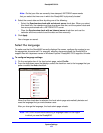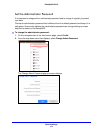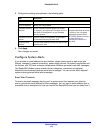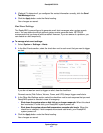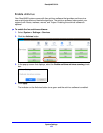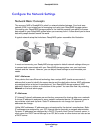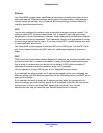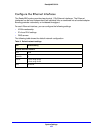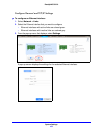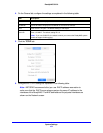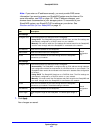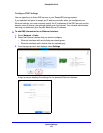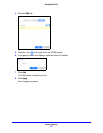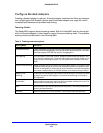
System Settings
161
ReadyNAS OS 6.0
Ethernet
Your ReadyNAS storage system uses Ethernet technology to transfer information on your
local area network. Ethernet technology divides data into smaller pieces, called packets or
frames, before transmitting it on your network. Ethernet technology includes methods to
check for data transmission errors.
MTU
You can also configure the maximum size of packets that are sent across a network. This
setting is called MTU (maximum transmission unit). A large MTU can help speed data
transmission in some circumstances. However, using a large packet size becomes inefficient
if an error occurs during transmission. That is because if any part of a large packet is corrupt,
the entire large packet must be resent. If you use a smaller MTU, smaller packets are resent
if a communication error occurs.
Your ReadyNAS system supports a maximum MTU size of 9000 bytes. Use this MTU size
only if your network interface card (NIC) and your switch support packets of this size or
larger.
DNS
DNS is short for Domain Name System. Because IP addresses are a string of numbers, they
are hard to remember. It is easier to remember a name (for example, www.readynas.com)
than a string of numbers when you want to visit a website. A DNS server translates IP
addresses into website names and website names into IP addresses.
You can specify up to three DNS servers in your ReadyNAS storage system.
If you selected the option to assign an IP address automatically when you configured your
Ethernet settings, the DNS fields are populated with the DNS settings from your DHCP server
and cannot be edited.
If you selected the option to assign an IP address manually when you configured your
Ethernet settings, you must manually specify the IP addresses of the DNS servers and the
domain name to access your ReadyNAS system over the Internet. Your network
administrator can help you determine your Domain Name Server IP address.



